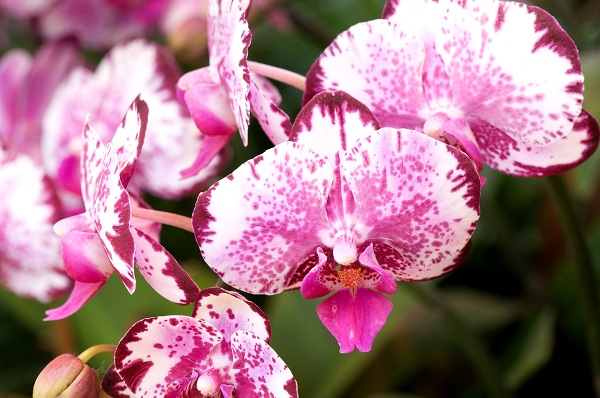
Orchids are among the most captivating and exquisite plants, cherished for their stunning blooms and intricate structures. Achieving successful orchid growth requires a delicate balance between providing proper nutrients and safeguarding against pest infestations. In this article, we’ll explore how proper fertilization and pest control can work in harmony to cultivate thriving orchids.
Understanding Orchid Nutritional Needs
Orchids are epiphytic plants, often found growing on trees or rocks in their natural habitats. This unique growing environment has influenced their nutritional requirements. Orchids typically require three primary nutrients: nitrogen (N), phosphorus (P), and potassium (K), as well as secondary nutrients and trace elements.
Nitrogen (N): Nitrogen is essential for foliage growth and the overall green color of leaves. Orchids need nitrogen to develop healthy leaves and pseudobulbs, which store nutrients and water.
Phosphorus (P): Phosphorus plays a vital role in promoting flowering and root development. It aids in energy transfer within the plant and supports the formation of strong, healthy roots.
Potassium (K): Potassium helps regulate water and nutrient movement within the orchid. It also enhances disease resistance, stress tolerance, and overall plant health.
Orchid Fertilization Techniques
1. Balanced Fertilizer: When selecting a fertilizer for orchids, opt for a balanced formula with an equal N-P-K ratio, such as 20-20-20. This ensures that the plant receives a well-rounded supply of essential nutrients.
2. Dilute Solutions: Orchids are sensitive to excessive fertilization, which can lead to root burn or salt buildup. Always dilute the fertilizer to half or a quarter of the recommended strength and apply it during the plant’s active growth phase.
3. Frequency: Fertilize your orchids every two to four weeks during their growing season, which is typically from spring to early fall. Reduce or eliminate fertilization during the dormant period.
4. Alternate Formulas: Some orchids may benefit from a balanced fertilizer supplemented with additional nutrients. Consider using a “bloom booster” fertilizer during the flowering phase to enhance the quality and quantity of blooms.
Orchid Pest Control Strategies
1. Prevention: The first line of defense against pests is prevention. Inspect new orchid plants before introducing them to your collection, as pests can quickly spread. Quarantine new plants for a few weeks to ensure they are pest-free.
2. Regular Inspection: Regularly inspect your orchids for signs of pests. Look for discolored leaves, sticky residue (indicating the presence of pests like aphids), and physical damage to leaves and flowers.
3. Cultural Practices: Proper cultural practices can help prevent pest infestations. Ensure adequate spacing between orchids to promote airflow, as stagnant air can attract pests. Maintain cleanliness by removing dead leaves and debris.
4. Organic Solutions: Neem oil and insecticidal soap are effective organic remedies for many common orchid pests. They work by suffocating pests and disrupting their life cycles.
The Synergy Between Fertilization and Pest Control
Proper fertilization and pest control are interdependent aspects of orchid care. When approached thoughtfully, they can work together to promote optimal plant health. Here’s how:
Vigorous Growth: Well-fertilized orchids tend to be more resilient to pest attacks. Strong, healthy plants are better equipped to defend themselves against pests.
Balanced Nutrition: A properly nourished orchid is better equipped to withstand the stress caused by pest infestations. Nutrient deficiencies weaken the plant’s defenses, making it more susceptible to pests.
Foliar Absorption: Orchids can absorb nutrients through their leaves. This process can be enhanced by spraying a foliar fertilizer solution, which also makes the leaves less appealing to certain pests.
Timely Detection: Regular inspections for pests can coincide with your fertilization schedule. During these checks, you can address both nutrient needs and any pest issues that arise.
Conclusion
Cultivating healthy orchids is a rewarding endeavor that involves a combination of art and science. By understanding the nutritional requirements of your orchids and implementing proper fertilization techniques, you can lay the foundation for robust growth and vibrant blooms. Simultaneously, implementing effective pest control measures ensures that your orchids are protected from common threats that can compromise their health. When these two aspects of orchid care are integrated harmoniously, you’re on your way to enjoying the beauty and resilience of thriving orchids.
Related Articles & Free Email Newsletter Sign Up
How to Chill Phalaenopsis Orchids
How to Create an Orchid Feeding Regimen
How to Tell If You Are Over-Watering or Under-Watering Your Orchids




Comment here